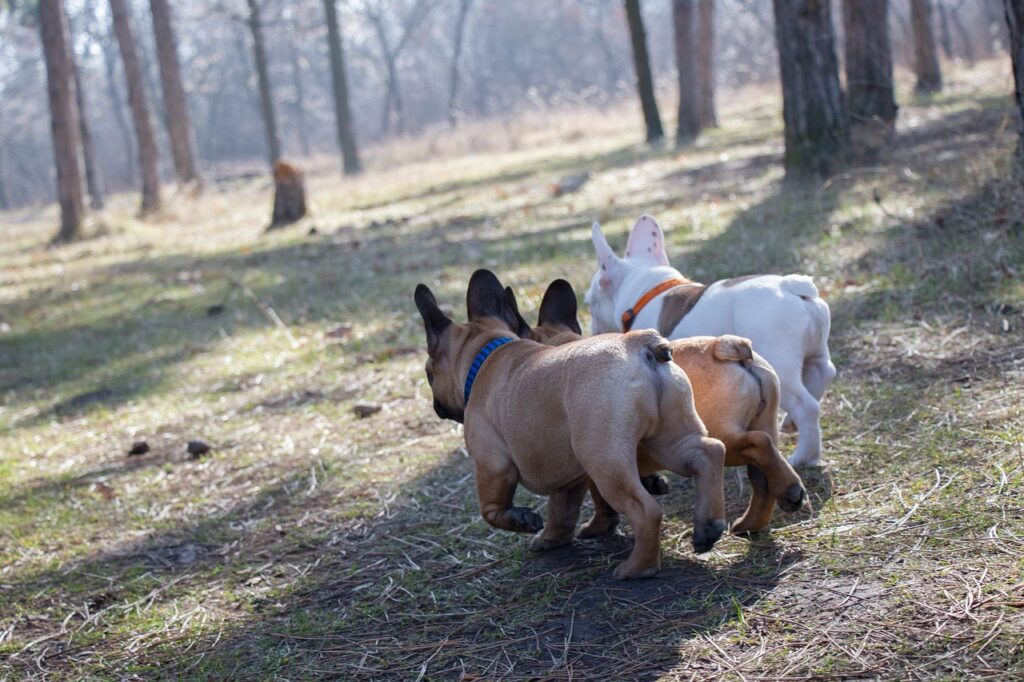Do you ever find yourself giggling, gagging, or genuinely puzzled by your dog’s frequent farts? As lovable as our furry companions are, their excessive flatulence can sometimes test our endurance.
In this article, we’ll delve into the gassy world of dogs, answering the question that often hangs in the air, much like the dog’s ‘silent but deadly’ – Why does my dog fart so much?
Table of Contents
The Farting Fido: A Stinky Affair
Oh, the joy of dog ownership! The unconditional love, the fun-filled walks, the companionship… and, of course, the farts. Sometimes it’s hard to believe how such a cute, innocent face can produce an odor so potent that it’d make a skunk blush.

But, as they say, love is about accepting your partner’s flaws, right? Farts and all!
Why do Dogs Fart? A Dive into Canine Digestion
It’s all well and good to accept your dog’s farts as part of the package, but wouldn’t it be even better to understand the science behind it? So, why do dogs fart? The answer lies within the canine digestion process.
Just like humans, dogs produce gas as a byproduct of digestion. When they eat, their bodies break down the food in the stomach and intestines, during which different gasses get produced. These gasses, having nowhere else to go, escape through the back door, leading to what we commonly know as farting.
Feeding Farts: The Role of Diet in Dog Flatulence
Ever noticed how some meals leave you gassier than others? The same applies to dogs. Diet plays a critical role in your dog’s digestive health and the extent of its flatulence.
Many commercial dog foods are packed with ingredients that are hard for our four-legged friends to digest, leading to increased gas production. These include lactose, legumes, and certain types of proteins and grains. If your dog’s diet is heavy on these components, you might have just found the culprit behind its farting escapades!
A Whiff of Health Issues: When Flatulence Signals Trouble
Flatulence can sometimes be more than just a stinky inconvenience. It might be a sign of underlying health issues. For instance, excessive flatulence can indicate gastrointestinal problems, food allergies, or malabsorption disorders. If your dog is excessively gassy, exhibits a drastic change in its flatulence pattern, or shows signs of discomfort, it’s time for a trip to the vet.
Clearing the Air: Tips to Reduce Dog Farting
Now that we’ve got a handle on why dogs fart, let’s look at how to reduce dog farting. After all, love should not have to smell like a gas leak, right?
- Diet adjustment: Switching to a high-quality, easily digestible diet can drastically reduce flatulence. Avoid foods high in indigestible ingredients and consider a hypoallergenic diet if food allergies are suspected.
- Regular exercise: Just as exercise aids our digestion, it does the same for dogs. Regular physical activity can help stimulate your dog’s digestive tract, reducing gas accumulation.
- Slower feeding: Fast eaters tend to swallow more air, leading to more farts. Slow-feeder bowls or feeding puzzles can help slow down mealtimes and reduce air intake.
- Probiotics: Adding a canine-specific probiotic to your dog’s diet can help balance gut bacteria, aiding digestion and reducing gas production.
Debunking Common Myths about Dog Farts
As with any topic concerning our beloved pets, several myths surround the phenomenon of dog farts. Some pet owners believe that a dog’s fart is a sign of a spoiled diet, while others think that certain breeds are just gassier than others.
While it’s true that diet and breed can influence a dog’s flatulence, it’s crucial to understand that these are just two of many contributing factors. Excessive farting isn’t necessarily ‘normal’ and shouldn’t be ignored if it’s disrupting your pet’s comfort or the olfactory peace of your household.
Breed and Age: Do They Influence Fart Frequency?
You might wonder, “Does my dog’s breed or age affect how much it farts?” The answer is yes, both these factors can play a part.
Certain breeds, particularly those with short noses like Bulldogs, Boxers, and Pugs, are more prone to swallowing air when they eat, which can lead to increased flatulence.
Similarly, age can have an impact too. Older dogs often have slower metabolic rates, which can cause food to pass more slowly through the digestive tract, leading to a higher chance of gas buildup and thus, more farts.
Regular Vet Checks: Your Ally Against Excessive Flatulence
While the occasional dog fart is nothing to worry about, a sudden increase in your dog’s flatulence frequency or intensity warrants a vet check. A veterinary professional can help determine if your dog’s gassiness is a sign of dietary intolerance, gastrointestinal disease, or a symptom of another health issue. Regular vet checks are essential in ensuring that your furry friend stays in optimal health.
Monitoring Overall Behavior: More Than Just Farts
Finally, it’s vital to look at the bigger picture of your dog’s overall behavior and health. Excessive farting coupled with other symptoms like decreased appetite, lethargy, vomiting, diarrhea, or noticeable weight loss should ring alarm bells.
These signs, especially when observed together, could indicate a serious health issue that needs immediate attention. So, while we might giggle or grimace at our dog’s farts, it’s important to remember they could be a crucial clue to our pet’s wellbeing.
Wrapping Up: Embracing the Farts and Beyond
Understanding the ‘whys’ behind your dog’s flatulence can go a long way in helping you keep your pet comfortable, and your home a bit less stinky. By debunking common myths, recognizing the influence of breed and age, keeping up with regular vet checks, and monitoring overall behavior, you’re well-equipped to handle your pet’s gassy episodes.
In the end, every fart is a reminder of the complex, sometimes stinky, but always wonderful creatures that share our lives. With a bit of knowledge and a lot of love, we can help make their lives – farts and all – as joyful as they make ours.


Dennis and Becca, have always shared a passion for man’s best friend. As dog enthusiasts, they put together articles that inform, engage, and captivate fellow dog lovers.